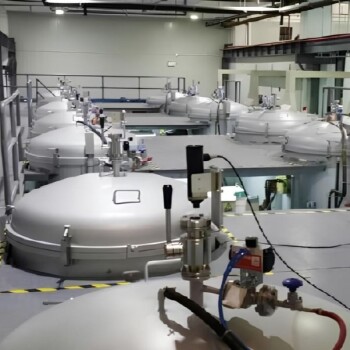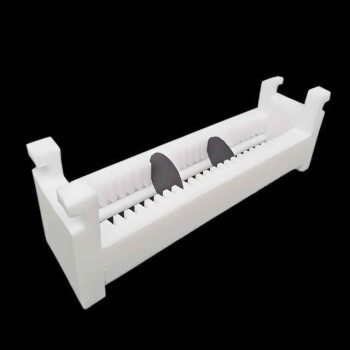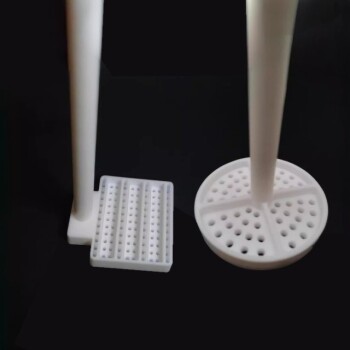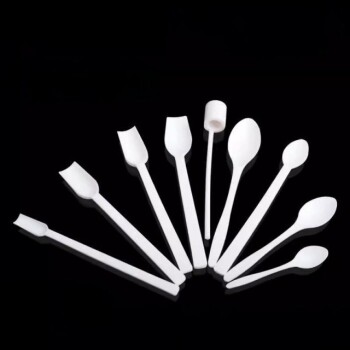PTFE is a versatile material with non-stick properties, excellent chemical resistance, high temperature stability and electrical insulation capabilities. It is widely used in industries such as manufacturing, chemical processing and electrical engineering for applications requiring low friction, chemical resistance and thermal stability. It comes in a variety of forms, including sheet, rod, tube, film and coating, and can be easily molded or machined to meet specific application requirements. However, compared with other engineering plastics, its mechanical strength is relatively low and it is easy to deform under continuous stress.
Toggle Categories
Get Instant Support
Choose your preferred way to connect with our team
-
Get Free Quote Fill out form for detailed pricing
-
Send Email Detailed inquiry support
-
WhatsApp Quick mobile chat
Response Time
Within 8 hours on working days, 24 hours on holidays
ptfe

Graphite Vacuum Furnace High Thermal Conductivity Film Graphitization Furnace
Item Number : GF-03

Custom PTFE Teflon Parts Manufacturer for Cleaning Racks
Item Number : PTFE-01

Custom PTFE Teflon Parts Manufacturer for Gaskets and More
Item Number : PTFE-05

Custom PTFE Teflon Parts Manufacturer Adjustable Height Flower Basket
Item Number : PTFE-14

Versatile PTFE Solutions for Semiconductor and Medical Wafer Processing
Item Number : PTFE-18

Custom PTFE Teflon Parts Manufacturer Corrosion Resistant Cleaning Rack Flower Basket
Item Number : PTFE-20

Custom PTFE Teflon Parts Manufacturer for Hollow Cleaning Basket and Rack Carrier
Item Number : PTFE-21

Custom PTFE Teflon Parts Manufacturer for Sampling Solution Sample and Dry Powder Spoons
Item Number : PTFE-22
One of the key properties of PTFE is its non-stick properties, which makes it widely used in applications requiring low friction and non-stick surfaces. PTFE has the lowest coefficient of friction of any solid material, meaning it has very low resistance to sliding. This property makes it ideal for use in bearings, seals, gaskets, and other applications where friction and wear need to be reduced.
PTFE is also known for its excellent chemical resistance. It is inert to most chemicals, including acids, alkalis, and organic solvents. This property makes PTFE suitable for use in chemical processing equipment, laboratory instrumentation, and other applications where there is frequent contact with corrosive substances.
Another notable attribute of PTFE is its excellent thermal stability. It can withstand temperatures up to 260 degrees Celsius (500 degrees Fahrenheit) without significant degradation. This makes PTFE suitable for high-temperature applications such as insulation for wires and cables, gaskets for engine components, and linings for industrial equipment.
In addition to its nonstick, chemical resistance, and thermal stability properties, PTFE is an excellent electrical insulator. It has very high dielectric strength and low dielectric constant, making it suitable for electrical insulation applications such as wire coatings, insulation sleeves and connectors.
In summary, PTFE is a versatile fluoropolymer with excellent chemical resistance, low friction properties, high temperature stability, and excellent electrical insulation capabilities. It is widely used in various industries, including chemical processing, electrical and electronics, automotive and aerospace. PTFE's nonstick properties, chemical resistance, thermal stability, and electrical insulation capabilities make it a valuable material in applications where low friction, chemical resistance, and electrical isolation are critical.
FAQ
What Is Polytetrafluoroethylene (PTFE)?
What Are The Key Properties And Characteristics Of PTFE?
What Are The Applications Of PTFE?
What Are The Advantages Of Using PTFE?
Are There Any Limitations Or Considerations When Using PTFE?
REQUEST A QUOTE
Our professional team will reply to you within one business day. Please feel free to contact us!
Related Articles

The Architecture of Invisible Containment: Why Material Choice Defines Electrochemical Precision
Explore the strategic engineering behind High Borosilicate Glass and PTFE in electrolytic cells—balancing visibility with absolute chemical inertness.

Why Your High-Temperature Processes Fail: The Hidden Enemy in Your Vacuum Furnace
Frustrated by inconsistent vacuum furnace results? Discover the real cause of failures and how to fix it by ensuring true vacuum integrity.

The Thermodynamics of Precision: Mastering the Double-Layer Electrolytic Cell
Precision isn't accidental. Discover the methodical operation of double-layer electrolytic cells, where thermal stability and rigid setup define success.

Inconsistent Melts? The Problem Isn't Your Furnace, It's the Physics.
Struggling with inconsistent alloy quality and high costs? Discover the hidden reason and learn how to choose the right furnace for perfect results.

The Art of Nothingness: Vacuum, Inert Gas, and the Pursuit of Purity
Vacuum vs. inert gas furnaces: Understand the trade-offs between absolute purity and cost-effective protection in laboratory heat treatment.

Why Your High-Temperature Furnace Failed—And How to Prevent It From Happening Again
Discover the hidden reason behind premature furnace failure. It's not poor quality, but a critical chemistry mismatch. Learn how to choose the right furnace.

The Inverted Cup: When Physics Hides a Lethal Trap in Vacuum Furnaces
Hot argon behaves counter-intuitively in bottom-loading furnaces. Discover the physics of the "inverted cup" effect and how to prevent silent asphyxiation.

The Architecture of Control: Why Thermal Stability Defines Electrolysis Success
Discover how double-layer water-bath electrolytic cells eliminate thermal variables, ensuring accuracy and reproducibility in electrochemical research.

Furnace Contamination: The Hidden Saboteur Ruining Your High-Value Parts
Discover why your heat-treating process fails on high-value parts. The issue isn't your settings—it's hidden furnace contamination. Learn the fix.

Why Your High-Temperature Furnace Elements Fail: The Critical Difference in Silicon Carbide
Furnace downtime from failing SiC heating elements costs time and money. Discover the critical material difference that ensures reliability in extreme applications.

How to Select the Right Oil-Free Diaphragm Pump for Your Lab or Industrial Needs
Learn how to choose the right oil-free diaphragm pump for your lab or industry—balancing specs, chemical resistance, and lifetime costs.

How to Choose Laboratory Vacuum Pumps for Maximum Efficiency and Cost Savings
Learn how to choose the right lab vacuum pump for efficiency & cost savings. Compare oil-sealed vs. oil-free pumps & future-proof your investment.

How Vacuum Induction Melting Prevents Catastrophic Material Failures in Critical Components
Discover how Vacuum Induction Melting (VIM) prevents material failures in aerospace, nuclear, and EV components by eliminating atomic-level contamination.

How Vacuum Induction Melting Elevates High-Performance Alloy Production
Discover how Vacuum Induction Melting (VIM) enhances alloy purity, reduces defects, and optimizes costs for aerospace and energy sectors.

How Vacuum Induction Melting Powers Superior Material Performance in Critical Industries
Discover how Vacuum Induction Melting (VIM) ensures 99.99% pure alloys for aerospace and medical industries, boosting performance and compliance.

How ULT Freezers Protect Scientific Discoveries in Genetics and Drug Development
ULT freezers safeguard genetic and pharmaceutical research by maintaining -80°C storage for DNA, proteins, and cell lines—preventing sample degradation and ensuring research validity.

Preserving the Irreplaceable: How ULT Freezers Protect Critical Samples Across Industries
ULT freezers at -80°C protect biological samples, vaccines, and research materials from degradation, ensuring long-term viability across industries.

Polytetrafluoroethylene (PTFE): How low friction coefficient promotes industrial progress
Explore the unique advantages of polytetrafluoroethylene (PTFE)'s low coefficient of friction and analyze how it promotes progress and innovation in industrial technology in terms of reducing wear and improving equipment efficiency.

Performance and application of polytetrafluoroethylene (PTFE) in high temperature environment

PTFE seals: the invisible guardian of industrial leakage prevention
PTFE Seals are used to prevent liquid or gas leakage and are widely used in valves, pumps, and piping systems.

